Maggie Secara's Blog, page 6
August 28, 2013
Stan Schatt: Making Egypt Real
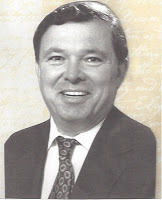 As we've seen lately, historical settings can be a real challenge for a writer since the location is either gone, in ruins, or built over. In a fantasy of your own devising, you have to make it all up and keep track in the fine detail readers demand. You'd think that setting a story in a modern city would be literally a walk in the park by comparison. Walk around your own neighborhoods and make notes, you're good right? But many new writers are tired of the same old places, and are choosing to tell their stories far from the fields they know. If you can't spent a lot of time in London or Shanghai or Timbukto, how do you make a place feel real? Stan Schatt, author of contemporary novel Egypt Rising, has an answer.
As we've seen lately, historical settings can be a real challenge for a writer since the location is either gone, in ruins, or built over. In a fantasy of your own devising, you have to make it all up and keep track in the fine detail readers demand. You'd think that setting a story in a modern city would be literally a walk in the park by comparison. Walk around your own neighborhoods and make notes, you're good right? But many new writers are tired of the same old places, and are choosing to tell their stories far from the fields they know. If you can't spent a lot of time in London or Shanghai or Timbukto, how do you make a place feel real? Stan Schatt, author of contemporary novel Egypt Rising, has an answer. 
It’s very tempting for writers to use their own cities and neighborhoods in their novels. It doesn't require any research, and there is little chance of making the kinds of mistakes that critics love to point out. There’s no worry that some critic will thumb his nose at the novel saying “only an ignoramus would be unaware that the river runs west and not east across the city.”
The problem, of course, is that setting all your novels in the same locale gets boring, both for the writer and
 for the reader. Even Faye Kellerman, the author of several best sellers set in Los Angeles, decided to write a novel set in Europe. Of course, the price a writer such as Kellerman faces is that some readers have certain expectations when they come to one of her novels. There’s a comfort level that comes with what the reader is used to reading. Michael Connelly, the well-respected mystery novelist, tries to balance reader expectations with his own desire to explore new territory by having Detective Harry Bosch take occasional trips. One Connelly novel takes place mostly in Hong Kong with a slice of the action back in Los Angeles.
for the reader. Even Faye Kellerman, the author of several best sellers set in Los Angeles, decided to write a novel set in Europe. Of course, the price a writer such as Kellerman faces is that some readers have certain expectations when they come to one of her novels. There’s a comfort level that comes with what the reader is used to reading. Michael Connelly, the well-respected mystery novelist, tries to balance reader expectations with his own desire to explore new territory by having Detective Harry Bosch take occasional trips. One Connelly novel takes place mostly in Hong Kong with a slice of the action back in Los Angeles.For that reason, I had some misgivings when I decided to set Egypt Rising in modern Cairo. Since I don’t speak Arabic, my main character, Olivia Hunter, is an American teenager who happens to live in Cairo with her archaeologist father. I only had to worry about Arabic words for food and clothes since Olivia uses street Arabic only when necessary. My trusty Egyptian Arabic dictionary (yes, there is an Egyptian version of Arabic) as well as a few good guidebooks provided me with all the phrases I needed to make the book feel authentic and to show that Olivia was accustomed to conversing in the language.

Any foreign city is a challenge to describe for an American writer. Small details really do count for authenticity. I still remember reading one of Ian Fleming’s James Bond novels and noting Fleming’s description of how his spy turned on a water faucet in Turkey and watched as it spat out an insect. In my case, I focused on some of the unique cultural aspects of Egypt. As an example, I described a bowab, a man responsible for handling the day-to-day needs of apartment dwellers. I also described specific Egyptian delicacies that Olivia was likely to enjoy.
When it came to the city itself, I used several guidebooks as well as maps to describe modern Cairo and its unique neighborhoods. One area of the city, for example, is occupied by people who bring home garbage and sort through the mounds of garbage in search of anything valuable. In another Cairo neighborhood, very poor people (it’s all relative in Cairo) are squatters in the many mausoleums found there. Olivia has a horrifying experience as she tries to find her way through that area.
My wife and I were fortunate enough to visit Cairo during one of her vacations. I still have vivid memories of the city. One fascinating detail I noted at the time and later incorporated into the novel is that Egyptians are taxed when a building is completed; as a result, many buildings are in a constant state of construction. I never have seen so many buildings that were occupied while clearly unfinished.

One major plot element in Egypt Rising has to do with the Egyptian revolution of 2011 that took place during the time known as the “Arab Spring.” I relied on several first-hand reports, many by Egyptian reporters, to get a sense of the chain of events that resulted in the ouster of President Mubarak. I also did quite a bit of research on the Muslim Brotherhood as well as other groups of Islamic fundamentalists. I read reports of how some of these groups attacked Western women.

A city and its people can’t be plucked out of the air without writing about its history. Michael Connelly does a fantastic job in his novels of describing historic Los Angeles buildings and events. Similarly, I wanted to give my readers a sense of Egypt’s history. I have always loved Egyptian history, so doing some additional research wasn’t a tough task. Olivia’s father, an archaeologist and lover of all things Egyptian, was a natural vehicle for adding historical elements to the novel. In addition, I described Olivia as a girl who very much wants to become an Egyptologist like her father. Her knowledge of all things Egyptian, including hieroglyphics, helps her save herself as well as others when she travels under the Sphinx. I also researched several Egyptian cults over the centuries, and incorporated that element into the plot.
Of course history can only take a writer so far. I’ve always loved the theory that refugees from Atlantis influenced the early Egyptians, so I incorporated that paranormal element into the novel along with Edgar Cayce’s descriptions of a “Hall of Records” that is supposedly buried under the Sphinx.
I hope readers enjoy Egypt Rising find my description of Cairo adds to their feeling that they really are visiting that city. As far as the paranormal elements of the novel, they may help answer a question that long has stumped historians who focus on ancient Egypt.

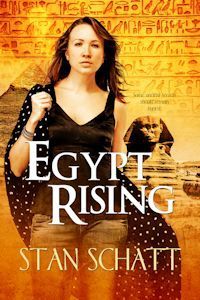 Who is Stan Schatt?Stan Schatt is interested in almost everything. He’s been an autopsy assistant, a law enforcement administrator, an English professor, a software trainer, a network manager, a retail store manager, and an industry analyst—just to name some of his careers. He taught at Tokyo University as a Fulbright professor and received citations for outstanding teaching from the University of Southern California and DeVry Institute of Technology.
Who is Stan Schatt?Stan Schatt is interested in almost everything. He’s been an autopsy assistant, a law enforcement administrator, an English professor, a software trainer, a network manager, a retail store manager, and an industry analyst—just to name some of his careers. He taught at Tokyo University as a Fulbright professor and received citations for outstanding teaching from the University of Southern California and DeVry Institute of Technology.Schatt has written thirty books on subjects ranging from green careers and telecommunications to law enforcement and Afro-American culture. He holds a PhD in English from the University of Southern California, an MBA from the Thunderbird School of International Management, and a BA in Chemistry from Arizona State University. He now devotes himself full-time to writing novels.
Get Stan's novel from Eternal Press
Learn More About Stan Schatt
Contact Stan at [email protected]Follow his Blog: www.stanschatt.comFind him on Twitter @stanschatt
Published on August 28, 2013 07:00
August 21, 2013
Rosemary Jones: Writing In A Shared World
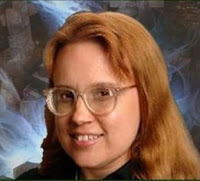
In Robert Asprin's Thieves World, Harlan Ellison's Medea, Eric Flint's 1632 (Ring of Fire), the shared world project has a distinguished lineage in fantasy. I actually wrote a story for Thieves' World once when it was still brand new and almost made it in, but short fiction isn't really my forte. Rosemary Jones, on the other hand, has become an enthusiastic—and successful—participant who will tell you.

Writing In A Shared World Lets You Tell Many Stories
Every year, I’m asked to discuss shared world writing at a convention. I love writing in shared worlds and have found the opportunity to tell the stories as varied as the worlds themselves. But I also find there’s some basic misunderstandings that crop up around the topic, largely because shared worlds often are confused with fan fiction.
When I give talks about this, the following questions always end up being asked. So here’s my answers, based on my experience of telling stories based in the Forgotten Realms, Cobalt City, Foreshadows: The Ghosts of Zero, and The Awakened.
 What is the difference between writing in shared worlds and fan fiction?
What is the difference between writing in shared worlds and fan fiction?In shared worlds, for the novels and stories that I write, I have a contract with the creator or the rights holder for that world. In short, I have legal permission to play in their sandbox and I get paid for the work that I do. People who write fan fiction don’t have contracts and are doing it for love rather than money. I love what I write, but I like getting a royalty check too.
Where do shared worlds come from? How many are there?Shared worlds come from many places. Usually, for science fiction and fantasy, the original world was created for a television series, movie, video game, or role-playing game (RPG). Sometimes they can be a book series begun by another author. Sometimes it is an idea put together by a publisher or book packager. A shared world doesn’t necessarily have to be fantastic: think Nancy Drew or the Babysitters Club. There are literally hundreds out there.
 Don’t you have to do a lot of research?It depends on the world and your story. Think of it as writing shared world fiction as being similar to writing historical fiction. People who write that do research, but they learn to focus it on the period and the place where they want to set their story. Shared world novels don’t generally cover every single aspect of the world. In fact, I think the more tightly focused that you can be, the better story you can tell.
Don’t you have to do a lot of research?It depends on the world and your story. Think of it as writing shared world fiction as being similar to writing historical fiction. People who write that do research, but they learn to focus it on the period and the place where they want to set their story. Shared world novels don’t generally cover every single aspect of the world. In fact, I think the more tightly focused that you can be, the better story you can tell. But don’t you have to sound like everyone else writing in that world?No. You can develop your very distinct voice. I’m known these days as the
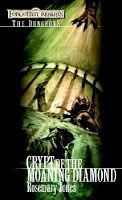 quirky one among the many Forgotten Realms authors. My characters aren’t super high-powered, they don’t save the entire world on a daily basis, and they often have pretty mundane concerns, like fixing the barn roof or moving out of the family home. I’ve had great fun creating offbeat plots about characters in the Forgotten Realms and other worlds that may or may not include small pets, topiary dragons, and vast libraries.
quirky one among the many Forgotten Realms authors. My characters aren’t super high-powered, they don’t save the entire world on a daily basis, and they often have pretty mundane concerns, like fixing the barn roof or moving out of the family home. I’ve had great fun creating offbeat plots about characters in the Forgotten Realms and other worlds that may or may not include small pets, topiary dragons, and vast libraries.Why do you call them “your characters” and “your plots” – aren’t you handed all that by the publisher?As a fellow shared worlds writer and I chorused at a recent con: “Oh, we wish.” Actually what we are usually handed is a short sentence or two. Or one word. My first Forgotten Realms novel needed to fit into the series title theme “Dungeon,” or, as the editor explained in response to my plaintive query to know more: an adventure that took place underground in either a known or previously unknown place. That became the Crypt of the Moaning Diamond. For the second novel that I wrote for Wizards of the Coast, who publish the Forgotten Realms books, I was asked to come up with a story set in a newly rebuilt city called Waterdeep. That led a story about a family who live next to, and maintain, the city’s big spooky graveyard: City of the Dead.
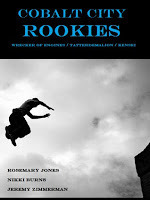 Still, don’t you want to create your own worlds?
Still, don’t you want to create your own worlds?Sometimes I do. I’ve worked on several projects where I was part of the initial group of authors writing stories about a world that was in the process of being built. One recent project was notable for the series of questions sent out by the publisher that we as authors needed to answer. As we did, we filled in the details, the color, and the life of that world. What’s fun is we got to riff off each other’s ideas or strike off in our own little corner. I’m involved in one shared world, Cobalt City, that works like an artists’ collective. We take certain characters, details, or bits and build our own worlds within that world. But it’s all interconnected.
But doesn’t somebody else then own your stuff?Again, that depends on the contract. For some shared worlds, the creator or the rights holder may own all aspects of your story, including the right to give other people leave to write about characters that you have created or plots that you began. Think about DC or Marvel, two huge shared worlds of superheroes. You can write a Batman mystery for DC or Spiderman dust-up for Marvel, but you won’t own those characters, any new villains you throw up against them, or the plot twists you bring to their tales. On the other hand, who wouldn’t love to write a Batman or Spiderman story? It’s up to you what you are willing to accept.
So you own some of your stuff?Yes. I have contracts for certain shared world projects where the rights revert back to me for my stories after a certain date or when the project goes out of print. Then I can sell them elsewhere. Which is why I try to write every shared world story in a way so that it is complete without the reader knowing anything else about the world. I love it when the fans of a certain world write to me and say that they enjoyed giving my books to their friends to hook them into the world. That’s a great compliment.
OK, since this does sound fun, how do I sell a shared world story? Write fan fiction?Actually fan fiction, while a great way to practice telling stories set in a shared world, may not be the best route to go. Many creators and right holders are advised by their lawyers not to read fan fiction. So they can’t or won’t scan it for new writers to recruit. I’ve never been a writer of fan fiction.
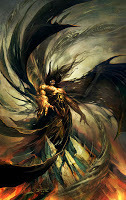 A better way to break in, I think, is to look for shared world publishers who are accepting open submissions. That happened to be Wizards of the Coast and the Forgotten Realms a few years ago. I broke in when they were doing open calls. They are not doing that right now, but there’s similar publishers out there, like Paizo, who are open to new writers. It’s like any market, it’s constantly changing, but you can usually find submission information on their websites. There’s also a huge gaming convention, called GenCon, that takes place every August. They run a very big writers workshop for writers of shared worlds and game developers.
A better way to break in, I think, is to look for shared world publishers who are accepting open submissions. That happened to be Wizards of the Coast and the Forgotten Realms a few years ago. I broke in when they were doing open calls. They are not doing that right now, but there’s similar publishers out there, like Paizo, who are open to new writers. It’s like any market, it’s constantly changing, but you can usually find submission information on their websites. There’s also a huge gaming convention, called GenCon, that takes place every August. They run a very big writers workshop for writers of shared worlds and game developers.Many smaller fantasy and science fiction conventions across the country run at least one or two panels in their writing symposiums on shared world writing. There you may meet agents and freelance editors who specialize in working with shared world projects – that can be a good way to break into newer, not yet announced worlds.
Also Amazon launched Kindle Worlds in July. That lets you have a contract with the rights holders, publish your own work about their world, and be paid. Which is some of the good parts of writing in a shared world but lacks the personal contact with the editors or creators that I like. The Amazon venture is very new. But it will be interesting to see how it develops.

More about Rosemary Jones
Rosemary Jones has sold shared world stories, novellas, serial adventures, and novels set in the Forgotten Realms, Cobalt City, Foreshadows: The Ghosts of Zero, and The Awakened. She’s also the author of numerous short stories appearing fantasy and science fiction anthologies, several nonfiction books about book collecting, and more. An active member of the Science Fiction and Fantasy Writers of America (SFWA), she is a frequent speaker at Northwest writing conventions and lurks in Seattle coffee shops plotting adventures with other shared world writers. You can find out more about all her writing activities at www.rosemaryjones.com.
Published on August 21, 2013 05:00
August 14, 2013
Kirsten Weiss: Magical Mystery Tour
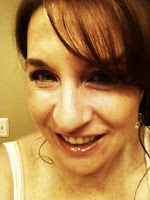 As you probably know, I love writing and reading about the magic and myth in the world around us. I also adore a good mystery even above most of the fantasy I read. Put the two together, and I'm in my own little corner of heaven. This week and all for your delight, author Kirsten Weiss is my guest to talk about that curious place where magic and mystery collide.
As you probably know, I love writing and reading about the magic and myth in the world around us. I also adore a good mystery even above most of the fantasy I read. Put the two together, and I'm in my own little corner of heaven. This week and all for your delight, author Kirsten Weiss is my guest to talk about that curious place where magic and mystery collide.
Hi, Maggie, and thanks for inviting me to your blog! I’d love to tell your readers a bit about writing paranormal mysteries.
I feel a bit like I’m in a Monty Python sketch when I say there are two parts to a paranormal mystery: the paranormal and the mystery. But working both of these together can be tricky. Mystery readers expect certain rules to be followed, and those rules can’t be violated by the laws of your paranormal world. And in order to suspend disbelief on the paranormal side—ghosts and demons and vampires—the writer needs to ground the reader somehow in a “real” world. This means being as accurate as possible, where you can.
But first, let’s tackle the paranormal.
There are lots of ways to approach fantasy. You can take the J.K. Rowling route and build off existing legends, or you can create your own world, with its own rules. In my paranormal mysteries, I decided to stick to “real world” magical rules and philosophies. This has given me the chance to research magic – from alchemy to shamanism—and it’s been tremendous fun, giving me an excuse to step away from my writing desk and talk to modern day magical practitioners.
However, one challenge is that magical practitioners today often don’t agree with each other about magical history or about how things work. So in the end, I go with the “answer” that makes the best story and that
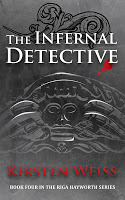 makes the most sense to me.
makes the most sense to me.For example, in The Alchemical Detective, I wanted to include demons. There’s a branch of magic called Goetia which looks at demons as projected parts of the self. And if we can learn to control our dark parts, our inner demons, we can direct them to a better purpose. Goetic magicians exert this control through magical ritual. As a writer, I wanted to show my heroine Riga Hayworth’s internal conflict, and thought this concept would do the trick. But then I spoke with a demon hunter, who strongly disagreed with this. For her, demons are real dark entities. This perspective would add more action to the story. So in the end, I split the difference, with the heroine dealing with flesh and blood demons that mirrored her own internal struggles.
Because I’m writing about the paranormal, I really try to make the “normal” parts of the stories accurate. It’s a funny thing in books, but readers who will happily accept fairies or ghosts will get really annoyed if I say something incorrect about, for example, the way a gun works. And I get it—you’re taking the reader on a journey and if a fact gets messed up, the reader is pulled out of the story. So writing a paranormal mystery becomes a balancing act between reality and fantasy.
For example, my first published novel, The Metaphysical Detective, is set in the San Francisco Bay area, a real place. My favorite pie shop, knitting store, and wine bar are all in the book (though I used different names for the businesses to protect the innocent).
I also try to keep the police procedures as “correct” as possible. I’m lucky because through my martial arts class, I’ve met some police officers who’ve been very generous with their time. And my martial arts instructor has helped plot out the fight scenes.
One thing I will absolutely not do in my writing, is have a fantasy solution to a murder mystery. Although my stories are a mix of mystery, fantasy, and romance, the puzzle has to be fair to the reader. There will always be a trail of “real” clues to a “live” murderer, which the heroine and reader can solve together. Crimes committed by ghosts are not allowed!
 About Kirsten WeissKirsten Weiss is the author of the Riga Hayworth series of paranormal mysteries: the urban fantasy,
The Metaphysical Detective
,
The Alchemical Detective
,
The Shamanic Detective
, and
The Infernal Detective
.
About Kirsten WeissKirsten Weiss is the author of the Riga Hayworth series of paranormal mysteries: the urban fantasy,
The Metaphysical Detective
,
The Alchemical Detective
,
The Shamanic Detective
, and
The Infernal Detective
.Kirsten worked overseas for nearly fourteen years, in the fringes of the former USSR and deep in the Afghan war zone. Her experiences abroad not only gave her glimpses into the darker side of human nature, but also sparked an interest in the effects of mysticism and mythology, and how both are woven into our daily lives. Now based in San Mateo, CA, she writes paranormal mysteries, blending her experiences and imagination to create a vivid world of magic and mayhem.
Kirsten has never met a dessert she didn’t like, and her guilty pleasures are watching Ghost Whisperer reruns and drinking good wine.
 Find Kirsten WeissWebsite/blog: www.kirstenweiss.comFacebook: https://www.facebook.com/metaphysicaldetectiveTwitter: http://twitter.com/RigaHayworthGoodreads: https://www.goodreads.com/author/show/5346143.Kirsten_Weiss
Find Kirsten WeissWebsite/blog: www.kirstenweiss.comFacebook: https://www.facebook.com/metaphysicaldetectiveTwitter: http://twitter.com/RigaHayworthGoodreads: https://www.goodreads.com/author/show/5346143.Kirsten_Weiss
Find Kirsten Weiss’s booksAmazon US Barnes & Noble Amazon UK Kobo
Published on August 14, 2013 18:28
August 7, 2013
Tracy S. Morris: So where DO ideas come from?
 Well that's the question, isn't it? When someone finds out you write, or when a delighted reader meets you for the first time, one of the most basic questions is "where do you get your ideas?" If you're suffering with that peculiar condition some call writer's block, you may be asking yourself the same question. "I can't think of anything!" you cry. This week Broad Universe member Tracy S. Morris looks the question squarely in the face and pops it squarely in the nose.
Well that's the question, isn't it? When someone finds out you write, or when a delighted reader meets you for the first time, one of the most basic questions is "where do you get your ideas?" If you're suffering with that peculiar condition some call writer's block, you may be asking yourself the same question. "I can't think of anything!" you cry. This week Broad Universe member Tracy S. Morris looks the question squarely in the face and pops it squarely in the nose.
When I was a child, my history teacher described New York City as a great melting pot – a place where people from all over the world come together like ingredients in a fondue. A melting pot is a great description for the brain of a writer: scraps of ideas from all over meld together like cheeses in a melting pot, producing a unique story.
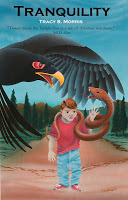
Take for example, Suzanne Collins’s story of how she came up with the idea for The Hunger Games. One night while flipping through channels on TV she passed reality game shows and footage of war. That, and her childhood memories of a father in the Vietnam War, all combined to produce a story of teens forced to kill one another in a televised competition to win food for their communities.
No writer lives in a vacuum. If you look hard, you can usually find the seeds of ideas in popular novels that influenced the writer. In The Lord of the Rings , you can see the fingerprints of Macbeth in Eowyn’s story (no man of woman born), and in the Ents (Burnham Wood comes to Dunsinane.) In the Dead Marshes, you can see Tolkien’s remembrances of no-man’s land from his time as a soldier in the First World War. In his Shire, you can see his love of the English countryside, and his worries about industrialization ending the pastoral life he knew as a boy.
Tolkien influenced Stephen King, who later wrote The Stand as a sort of post-apocalyptic quest story. On his website, King wrote “. . .what all of my ideas boil down to is seeing . . . two things and having them come together in some new and interesting way, and then adding the question 'What if?' 'What if' is always the key question.”
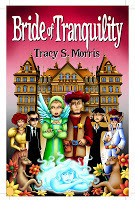 In my own work, the settings provided plenty of ideas for my books. Bride of Tranquility is set in a fictional hotel in the Ozark Mountains that I loosely based on the Crescent Hotel in Eureka Springs, Arkansas. The actual hotel claims to be the most haunted hotel in America, complete with secret passageways and a history as a cancer hospital with a quack doctor. A tuckerized version of this hotel was the perfect setting for a murder mystery. For the previous work, Tranquility, I drew my inspiration from the numerous ‘scary beast out in the woods’ stories that pop up throughout the south, such as the Boggy Creek Monster and the Mothman.
In my own work, the settings provided plenty of ideas for my books. Bride of Tranquility is set in a fictional hotel in the Ozark Mountains that I loosely based on the Crescent Hotel in Eureka Springs, Arkansas. The actual hotel claims to be the most haunted hotel in America, complete with secret passageways and a history as a cancer hospital with a quack doctor. A tuckerized version of this hotel was the perfect setting for a murder mystery. For the previous work, Tranquility, I drew my inspiration from the numerous ‘scary beast out in the woods’ stories that pop up throughout the south, such as the Boggy Creek Monster and the Mothman. Some writers find their ideas when they take a break from their own writing. That’s how Joss Whedon came up for the idea for the space western TV series Firefly. He was reading a book about reconstruction in the south after the Civil War. If you have ever seen the series, that sense of defeat and doing what it takes to get by permeates the series.
For writers, inspiration is all around. It’s just a matter of letting the cranial melting pot simmer a bit.

Learn more about Tracy S. MorrisWhen Tracy S. Morris was four years old, she wrote her first “novel” in crayon on the back of a newspaper and gave it to the post man along with an antique silver dollar so that someone could turn it into a novel. She is still waiting to hear back from her publisher.
On a good day, Tracy has photographed two of the Presidents of the United States, taken a hot air balloon ride and met two of her favorite sports legends from separate sports. On a bad day, she’s been dragged behind a speedboat on an icy lake in freezing rain. She’s been a photographer, reporter, writer, fencer, historian, costumer, and gardener. She holds a black belt in taekwondo, and is a self-confessed kamikaze speller. In 2012 she assumed her most challenging and rewarding role: Mommy.
Tracy’s first novel, Tranquilitywas published in 2005 by Yard Dog Press. It was the runner up for a Darrell Award for Best Midsouth Science Fiction in 2006. Her second novel, Bride of Tranquility was published in 2009. It was a finalist for the Darell Award in 2010. Both books were picked up in eBook format in 2010 by Baen Books.
When she’s not writing, Tracy goes by the name Tracy Godsey. She lives with her husband Ryan, daughter Issa Belle and two shiba inu dogs. Ryan is a computer programmer for Tyson foods and administers her blog. The dogs do their best to avoid Issa.
 Read more by Tracy S. MorrisGet all Tracy's latest news and updates at tracymorris.com.Click here for the Kindle version of Tranquility Click here for Bride of Tranquility Hardcopy lovers will find both books in trade paperback at Yard Dog Press.And you can listen to me on these podcasts:
Read more by Tracy S. MorrisGet all Tracy's latest news and updates at tracymorris.com.Click here for the Kindle version of Tranquility Click here for Bride of Tranquility Hardcopy lovers will find both books in trade paperback at Yard Dog Press.And you can listen to me on these podcasts:Lunch on Fridays Yard Dog Press Audio Roadshow
Published on August 07, 2013 04:00
August 1, 2013
Roberta Rogow: Alternate history's pleasures and perils
 To my horror, I realized the other day that I had run out of scheduled guests for Wednesdays! So at once I put out the call, and not only did I find lots of talented, interesting authors to introduce you to, but the delightful Roberta Rogow even managed to provide me — overnight — with a wonderful post about the research and techniques she used in creating the world of her new historical mystery. So we're only a day late and not even a dollar short. Roberta, I owe you one!.
To my horror, I realized the other day that I had run out of scheduled guests for Wednesdays! So at once I put out the call, and not only did I find lots of talented, interesting authors to introduce you to, but the delightful Roberta Rogow even managed to provide me — overnight — with a wonderful post about the research and techniques she used in creating the world of her new historical mystery. So we're only a day late and not even a dollar short. Roberta, I owe you one!.
 We live in a Reality that is the culmination of a series of events, We learn all about them in school: how Western Civilization began with the ancient peoples of the Middle East and Egypt, how Greece and Rome rose and fell, how Europe evolved and became dominant, how our own United States prevailed in the twentieth century, thanks to our unique blend of democracy and technology. it all seems so logical, it must have been meant to happen that way. Many people believe in a divine plan to human history, that it was all foretold by some greater being than ourselves, and that questioning it is blasphemy or worse.
We live in a Reality that is the culmination of a series of events, We learn all about them in school: how Western Civilization began with the ancient peoples of the Middle East and Egypt, how Greece and Rome rose and fell, how Europe evolved and became dominant, how our own United States prevailed in the twentieth century, thanks to our unique blend of democracy and technology. it all seems so logical, it must have been meant to happen that way. Many people believe in a divine plan to human history, that it was all foretold by some greater being than ourselves, and that questioning it is blasphemy or worse.But what if the world we live in came about by pure chance? What if something or someone did something differently? What if a key battle was lost or won by the other side? What if someone died, or lived, who had lived or died in our history? What if...? And this, friends, is what alternate history is all about.
My 'what if' is the notion that the Muslim Moors hung onto the Iberian Peninsula far longer than they actually
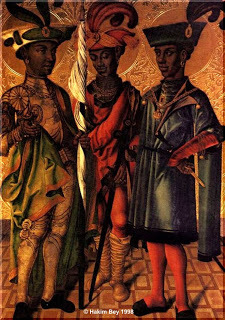 did, so that the seafarers who “discovered” the New World were Muslim traders, not Catholic conquistadors. What I call Nova Mundum is settled by colonists sent by the Caliphs of Al-Andalus and African kings from Ghana and Malawi, who plant cotton and raise tobacco and use other Africans and captured Europeans as slaves. The northern areas of Nova Mundum, which do not appeal to people used to tropical and sub-tropical climates, are taken over by Northern Europeans. The locals, Creek and Cherokee in the south, Iroquois and Algonquin in the north, are treated as equals by the Africans, who have no color biases, as long as they are willing to accept “Ilha” and the Prophet. Jews (Yehudit in my world) are able to live peacefully in Al-Andalus, but are persecuted everywhere else.
did, so that the seafarers who “discovered” the New World were Muslim traders, not Catholic conquistadors. What I call Nova Mundum is settled by colonists sent by the Caliphs of Al-Andalus and African kings from Ghana and Malawi, who plant cotton and raise tobacco and use other Africans and captured Europeans as slaves. The northern areas of Nova Mundum, which do not appeal to people used to tropical and sub-tropical climates, are taken over by Northern Europeans. The locals, Creek and Cherokee in the south, Iroquois and Algonquin in the north, are treated as equals by the Africans, who have no color biases, as long as they are willing to accept “Ilha” and the Prophet. Jews (Yehudit in my world) are able to live peacefully in Al-Andalus, but are persecuted everywhere else.More or less in the center of the coast-line of Nova Mundum is a natural harbor, fed by a broad river into the interior, and an island shaped something like a man's foot. The Locals call it “Manahatta”, which the Moors slur into “Manatas”. Today, we call it Manhattan Island.
To this island comes Halvar Danske, the hireling of Caliph Don Felipe of Al-Andalus, with a simple mission: find the louche genius Leon di Vicenza, whose brilliant mind might be able to devise some way of preventing the northern armies from overrunning Al-Andalus and turning it back into Roman Hispania. The very first day on the island Halvar trips over a dead body, which may or may not be the missing artist/engineer. And things go downhill from there!
There are more murders, which may or may not be connected. There is false coinage being circulated in the annual trade gathering, the Feria. There are rumors that a rival Local tribe is planning an invasion from the north. As the Caliph’s personal hireling, Halvar is expected to deal with all of this, in spite of his protestations that he is only there to get Leon and take him home to Al-Andalus.
Halvar is faced with a totally unknown country, a law enforcement agency headed by someone with secrets of his own, and a lover from his own past. He sticks to his orders with dogged determination, but Nova Mundum has a way of changing people, almost against their will. Such is the Saga of Halvar the Hireling, which I have begun in Murders In Manatas (Zumaya Publications, 2013).
 The fun of Alternate History is the research. In order to change something, you have to know what actually happened, and have some theory as to why, so as to extrapolate what will follow the change. My research is both literary and concrete.
The fun of Alternate History is the research. In order to change something, you have to know what actually happened, and have some theory as to why, so as to extrapolate what will follow the change. My research is both literary and concrete.I have a selection of books on hand that cover the topography of Manhattan Island; the original history of what the Dutch called Nieuw Amsterdam, the culture of the Dutch 16th and 17th centuries; Islamic history and culture, with the emphasis on Spain, and the so-called Golden Age; the convivencia, the unspoken agreement between Muslim, Christian, and Jew that allowed the three religious communities to co-exist on the Iberian peninsula during a period of intense religious persecution almost everywhere else in Europe. I also have materials on the Native Americans who settled in, on, and around the islands of Manhattan and environs, since they, too, play and important role in Manatas,.
I live in New Jersey, right across the Hudson River from Manhattan, so I can actually walk where Halvar walked. There isn't much left of Dutch Nieuw Amsterdam after three hundred years of building and land-fill, but I can get a sense of where things are, and how long it takes to get from one place to another. I have access to two great collections of artifacts from the Dutch Colonial era, the Museum of the City of New York and the New-York Historical Society, both of which have libraries and displays that have been a great help in formulating the Manatas Universe.
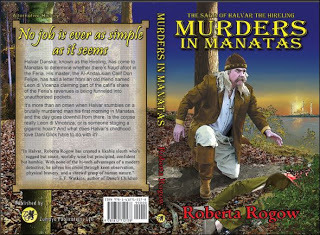
The peril of writing alternate history is the lure of getting sucked in by the back-story and forgetting to tell the tale of the people who live in your version of history.
If I wanted to write a historical tract, I'd be a historian. I'm a storyteller. I have to remind myself that my readers don't really care how Manatas got that way. They want to find out whodunit, who killed the girl in the clam beds, and why. They want to find out if Halvar and his long-lost love Dani ever get together. They want to know what's going to happen when the Bretains, the Locals, and the Andalusians realize that Al-Andalus might not be able to protect them from the ravages of a Huron invasion.
If you want to know what happens.... I'm already working on the next installment of The Saga of Halvar the Hireling. Meanwhile, Murders in Manatas is available for Nook and Kindle and in paperback from Amazon.com.
And you can reach me at Facebook: Manatas Skyline, or at almost any SF or Mystery convention on the east coast of North America.

Salaam Aleikum, God-be-with-ye, and Happy Reading!
Published on August 01, 2013 05:00
July 23, 2013
Cathie Dunn: Once in the Highlands
 I've played Scottish characters, I've danced Highland dances, and sung Scottish songs, and loved every bit of it. But I've only ever spent a few days in Scotland. Nothing gets a writer into the feel of a place like actually being there. Visiting is good, but Cathie Dunn actually lives there. So it's no wonder that the smell of the heather, like her love of history, runs through her books. For her, "writing what you know" doesn't seem at all unreasonable!
I've played Scottish characters, I've danced Highland dances, and sung Scottish songs, and loved every bit of it. But I've only ever spent a few days in Scotland. Nothing gets a writer into the feel of a place like actually being there. Visiting is good, but Cathie Dunn actually lives there. So it's no wonder that the smell of the heather, like her love of history, runs through her books. For her, "writing what you know" doesn't seem at all unreasonable!
Thank you, Maggie, for letting me visit your lovely blog. I’d love to tell your readers a wee bit about writing historical Scottish adventures.
Like you, Maggie, I love history. I'm fascinated by Scottish history, particularly medieval and Jacobite, English medieval and Tudor, and the Norman conquests across Europe. My bookshelves are creaking under the weight of history tomes, but in between those, you’ll find little booklets, their content collated in small Highland or Normandy communities, released by small local printers, which provide inspirations galore. Those are the jewels in the crown, as you’ll find important little details that make your book just that little more authentic.
My first published novel, a historical romance, Highland Arms, is set in the Scottish Highlands, near the dramatic hills of Glencoe and the hamlet of Ballachulish in 1720.
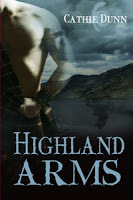 Having visited the area many times, the decision of where to set Highland Arms was an easy one. I loved creating a novel based on the stunning landscapes and troublesome history.
Having visited the area many times, the decision of where to set Highland Arms was an easy one. I loved creating a novel based on the stunning landscapes and troublesome history.Even the ‘Drovers Inn’ mentioned in the novel is based on a real inn: the cosy Clachaig Inn! Visitors to the Scottish Highlands should check it out. (And no, I’m not on commission, sadly!)
Baile a' Chaolais, Ballachulish’s Gaelic name, means 'village of the narrows'. It lies at the junction where Loch Leven flows into the much larger Loch Linnhe. The original village lay in what is now North Ballachulish (Highland Arms is based just a couple of miles north along the shore of Loch Linnhe), with a settlement in South Ballachulish, now linked by a bridge, established later. I used a local historian’s accounts for details about smuggling activities in the area, which I incorporated into the novel.
 Ballachulish is less than a mile from Glencoe village, at the entrance to the Glencoe hill range. The small villages nestle at the bottom of hills, with clouds always hovering low over the mountaintops. It is a highly atmospheric place. Scottish history buffs will know the sad story of the place, the Massacre at Glencoe that befell Clan Macdonald in 1692. You can still sense the desolation today as you travel through the glen. I used the melancholy of the area and incorporated it into a scene where the heroine travels on horseback, listening to tales of the (then) recent massacre. The low mist and drizzle, which tends to be the norm in Glencoe, completes the setting.
Ballachulish is less than a mile from Glencoe village, at the entrance to the Glencoe hill range. The small villages nestle at the bottom of hills, with clouds always hovering low over the mountaintops. It is a highly atmospheric place. Scottish history buffs will know the sad story of the place, the Massacre at Glencoe that befell Clan Macdonald in 1692. You can still sense the desolation today as you travel through the glen. I used the melancholy of the area and incorporated it into a scene where the heroine travels on horseback, listening to tales of the (then) recent massacre. The low mist and drizzle, which tends to be the norm in Glencoe, completes the setting. 1720 was a time of great upheaval, only five years after the first Jacobite rising. Spies lurked everywhere, and Highlanders didn’t know who they could trust. Clans fought against each other, plotting and seeking their own advantage. Jacobites were lying low, defeated but not giving up. A tale of a ship carrying arms stranded in a northern Highland loch gave me with the perfect back story – the hero needed the muskets to start another rebellion. Or so he hoped...
1720 was a time of great upheaval, only five years after the first Jacobite rising. Spies lurked everywhere, and Highlanders didn’t know who they could trust. Clans fought against each other, plotting and seeking their own advantage. Jacobites were lying low, defeated but not giving up. A tale of a ship carrying arms stranded in a northern Highland loch gave me with the perfect back story – the hero needed the muskets to start another rebellion. Or so he hoped...So you see, it’s not necessarily the well-known historical accounts that provide authors with intriguing plot ideas; sometimes it’s the little stories, the tales collated and written down by locals, and spotted in a dusty little museum, that make the best storylines.
Start digging!
 About Cathie DunnCathie Dunn writes romantic suspense & adventure set in Scotland, England and Normandy. A hobby historian, her focus is on medieval and Jacobite eras.
About Cathie DunnCathie Dunn writes romantic suspense & adventure set in Scotland, England and Normandy. A hobby historian, her focus is on medieval and Jacobite eras.She has two historical novels published: Highland Arms, a romantic Scottish adventure, and Dark Deceit, the first in The Anarchy Trilogy. She also self-published Silent Deception, a romantic spooky novella set in Victorian Cornwall. All her books are available on Amazon.
Cathie lives in Scotland with her husband and two cats and currently works on a contemporary romantic suspense set in Idaho, US, and a historical Scottish romance.
Find Cathie DunnWebsite/blog: www.cathiedunn.comFacebook: https://www.facebook.com/cathie.dunn1Twitter: https://twitter.com/#!/cathiedunnGoodreads: http://www.goodreads.com/author/show/5066224.Cathie_Dunn
Find Cathie Dunn's books
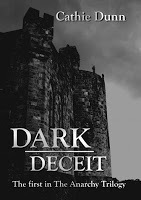 Amazon US: http://www.amazon.com/Cathie-Dunn/e/B005IHAXH0/Barnes & Noble: http://www.barnesandnoble.com/c/cathie-dunnAmazon UK: http://www.amazon.co.uk/Cathie-Dunn/e/B005IHAXH0/
Amazon US: http://www.amazon.com/Cathie-Dunn/e/B005IHAXH0/Barnes & Noble: http://www.barnesandnoble.com/c/cathie-dunnAmazon UK: http://www.amazon.co.uk/Cathie-Dunn/e/B005IHAXH0/
Published on July 23, 2013 23:00
July 17, 2013
Chatting in Character: The Seal Queen
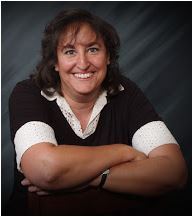 This week we're part of a blog tour for Sandra Saidak as she introduces her latest historical fantasy novel The Seal Queen, set in Bronze Age Ireland Now the usual thing would be to interview the author, ask about the book and her writing background, and where she gets her ideas (when do I ever ask that?)
This week we're part of a blog tour for Sandra Saidak as she introduces her latest historical fantasy novel The Seal Queen, set in Bronze Age Ireland Now the usual thing would be to interview the author, ask about the book and her writing background, and where she gets her ideas (when do I ever ask that?)Personally, I've always been fascinated by Irish myth and folklore myself—and I do have an old connection to a family with a selkie on its banner—so this seemed the perfect opportunity to explore it with someone who lives there: the Seal Queen's protagonist, Briah.

MSW : Briah, I know your story, and it is harrowing. What would you like people to know about your life?
Briah : I was born in a small farming village, in the foothills of a mountain range you would call the Swiss Alps. My first eleven years would never have made a bardic tale: they were normal, happy, and completely ordinary. All of that changed when raiders attacked my village and carried off several women and children—among them me. For the next three years, I was a slave to a man of great power and great evil. Lir was said to be a demon, although to the children he used as toys—and often broke with his style of play—he was a
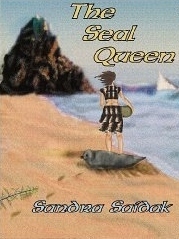 god. When I grew too old to amuse him, Lir sold me to traders who traded me all the way to the end of the earth. That was when I saw the ocean for the first time, and when I first met creatures called seals. And that was when I learned that there was good magic in the world, as well as evil. Because from the moment I touched the salt water, and looked into the eyes of that first seal, I’ve been protected—along with the child I was carrying. That magic helped me find the strength to escape from slavery, make a life for my son and me, and even heal from the horrors of the past. And someday, I hope to heal others.
god. When I grew too old to amuse him, Lir sold me to traders who traded me all the way to the end of the earth. That was when I saw the ocean for the first time, and when I first met creatures called seals. And that was when I learned that there was good magic in the world, as well as evil. Because from the moment I touched the salt water, and looked into the eyes of that first seal, I’ve been protected—along with the child I was carrying. That magic helped me find the strength to escape from slavery, make a life for my son and me, and even heal from the horrors of the past. And someday, I hope to heal others. MSW : It must have taken great strength of character, and of purpose, to endure so much. Where do you think that strength came from?
Briah : I never thought of myself as strong—and certainly not as any kind of hero, which some people, ah, creatures, are calling me now. When I was taken from my family and sold as a slave, all I thought about was staying alive. After awhile, that became my whole world; everything else inside of me; everything I had ever been, just disappeared. Then, when I learned I was pregnant, something happened. It was as if those things began to come back, and some new things besides. This island I live on now, rightly called the Emerald Isle, gave me strength as well. From the moment I stepped ashore, I could feel the magic, calling to me. It told me that I could one day be free again, and that I could keep my child—something any
slave woman can tell you is impossible. Yet I began to believe it. And once I started to believe, I started to make it happen. Although I know I had help—in the form of shape-shifting seals and enchanted beaches. By now, you probably think I crazy, and I may well be. But I’m also happy.
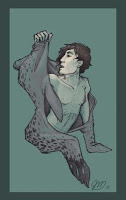
MSW : Will you share something about your relationship with your son?
Briah : I never expected to love Kamin. After what Lir did to me, I never thought I could love anyone ever again. I was terrified when I first discovered I was pregnant. Lir, my…master…did not want to have children. I’m only alive now because he sold me before anyone knew I carried his seed. The strange thing is, as soon as I was far enough from Lir to begin to feel safe, I began to love my unborn child. And that love is what gave me the strength to escape from slavery, start a new life, and, well, everything I’ve done since then.
MSW : What can you tell us about the roane?
Briah : The roane are seals who can shed their skin and assume human shape. They are similar to selkies. Both races have tales of being trapped in human form when a human steals and hides their fur. When they find their hidden fur, they return to the sea—often with children in tow, and broken hearted mortal husbands left behind. Unlike selkies, who often avenge the death of one of their own by raising terrible storms and wrecking whole settlements, the roane are much kinder and gentler. In fact, many of their tales focus on forgiveness and redemption. I was fortunate enough to witness one such story myself.
MSW : What do you really know about Taran? What is he? Where did he come from?
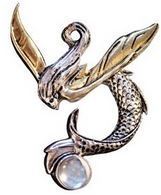
Briah : (grinning): I don’t really know yet, but there are days I can’t wait to find out! Other days, I want him to stay as he is: a mystery that haunts my dreams. And what beautiful dreams they are. So far, I’ve only caught a glimpse of him, out in the water. I know he’s some kind of merman, and I know his song is the most beautiful thing I’ve ever heard. He also brings me gifts. Feathers and flowers from strange lands across the sea; exotic seafood. Once, when Kamin and I were both sick, and I couldn’t go out to find food, he brought us a huge fish—with successively smaller fish tucked inside. It was quite a feast. And we were both well by the time the last of it was gone. Coincidence? I think not.
MSW : How does love fit into your life, after all these trials?
Briah : I know that I love my son, Kamin. And I loved my late father, for whom my son is named. I love this beach where I live, and the seals who are my friends. But if you’re asking about the love of a man…That is not something I’ve ever known. And what I had instead makes it hard for me to trust any man. Perhaps that is why I like the way things are right now. I have a mysterious magical lover out there in the sea. I have his song and the gifts he brings, and wonderful dreams. But I don’t have to face the reality of love. I don’t have to risk my heart—or risk discovering that I’m too damaged to ever find pleasure in a man’s touch. For now, the fantasy is enough. Maybe someday, I’ll be brave enough to try the reality.

MSW : Thanks so much, Sandra Saidak, for giving me a chance to explore this fascinating character from the inside out, as it were. I asked Briah to look into her future, now please tell me about yours. What's on your horizon?
SARAH: Briah’s story is now complete, but I am working on several exciting projects right now. My next book, Keepers of the Ancient Wisdom will complete my Kalie’s Journey trilogy. The first two are currently available on Amazon, and I hope to have book three out in December. I am also working on an alternative history novel dealing with World War II—but not the kind that’s ever been done before, as far as I know. However, the research on Irish and other mythologies I did in writing The Seal Queen has been so fascinating that I fully expect to use many more of these stories in future writing. That was not something I expected when I sat down to write The Seal Queen, but I’m glad it happened, and I can’t wait to see what my always active imagination settles on next.

Learn more about Sandra Saidak
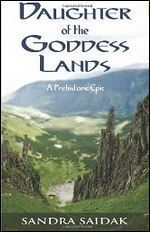
Sandra Saidak is a high school English teacher by day, author by night. Her hobbies include reading, dancing, attending science fiction conventions, researching prehistory, and maintaining an active fantasy life (but she warns that this last one could lead to dangerous habits such as writing). Sandra lives in San Jose with her husband Tom, daughters Heather and Melissa, and two cats. Writers she counts as her greatest influences include Jean Auel, Spider Robinson, Zena Henderson, Marion Zimmer Bradley and Ursula K. Le Guin.
Sandra’s prehistoric fiction series, Kalie’s Journey began with the novel, Daughter of the Goddess Lands, an epic set in the late Neolithic Age, and published in November 2011 by Uffington Horse Press. Book 2 of the series, Shadow of the Horsemen, was released in July of 2012. A story set in the Kalie universe can be found in Sandra’s short story collection, In the Balance. Sandra loves to hear from her readers, so feel free to post a comment on her Author’s Page, or her website at http://www.sandrasaidak.com/. Or of course, right here on Maggie's blog.
Get more Sandra SaidakFind me on Facebook (Sandra Saidak)
My website is http://sandrasaidak.com/
My books can be purchased on my Amazon Author Page
Published on July 17, 2013 04:00
July 10, 2013
Sharon Cathcart: Writing in another world
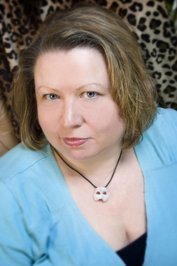 The world is so full of a number of things, and this week my friend Sharon E. Cathcart had taken up one of the more delicate ones. Her new novella, His Beloved Infidel, involves a relationship made more difficult than usual for people from different cultures and languages, even different religions. In fact, I'll leave any further introduction to her.
The world is so full of a number of things, and this week my friend Sharon E. Cathcart had taken up one of the more delicate ones. Her new novella, His Beloved Infidel, involves a relationship made more difficult than usual for people from different cultures and languages, even different religions. In fact, I'll leave any further introduction to her. 
I stepped out of my authorial comfort zone recently: I wrote an interracial romance novella. “His Beloved Infidel” Is the story of Farukh, an Iranian man, and Catherine, an American woman, finding love in Paris against the backdrop of the 1979 Islamic Revolution.
I was inspired to write this story of ordinary people caught up in extraordinary events after reading Sattareh Farman Farmaian’s memoir, “Daughter of Persia,” in which she talks about her life under three very different Iranian government regimes (Farmaian narrowly escaped execution during the Islamic revolution).
But I was also inspired by my own failure to take advantage of the opportunity to learn more, right in my own back yard.
I was in high school when the Islamic Revolution occurred. We had an Iranian exchange student, Hamid (nicknamed Ramin, which is Farsi for “one who brings joy”), who could not go home because of it. It never occurred to me to ask him what that felt like … what it meant from a personal perspective to have to live another year amongst the people against whom his new government railed. Like all teenagers, I was too self-absorbed to give it a second thought.
I thought of Ramin often while I did the research for my novella. There are a lot of challenges when it comes to writing about a culture not your own, and it was always in the back of my mind that I needed to be both truthful and sensitive.
I read a lot of memoirs: first-person accounts are vital to understanding time and place, I think. Getting
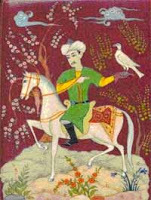 a little window on people’s lives is a great start.
a little window on people’s lives is a great start.I looked at Islamic art on the internet as well, and read a lot of poetry (I can’t recommend Rumi highly enough). Next time I’m in Paris, the Louvre’s Islamic art collection is high on my list of things to see. There is a scene in my book wherein Farukh takes Catherine to see the collection and talks to her about each of the Persian pieces as a way of sharing his culture with her.
There was only so much I could get from books and the internet, though. So, I turned to … my hairdresser.
Yes, my hairdresser. She and her husband escaped Iran during the Islamic Revolution. I was a little nervous about asking, and said I would understand if she didn’t want to talk about it.
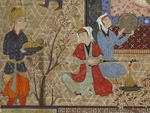 “Sweetheart,” she said, “You ask because you have a big heat and want to know how people live all over the world. So, yes, I will tell you.”
“Sweetheart,” she said, “You ask because you have a big heat and want to know how people live all over the world. So, yes, I will tell you.”From my delightful friend, I learned things about Islamic law, life in Iran, and even how to pronounce some things in Farsi that I never gleaned from my studies. Things that could only be learned by talking with someone who knows first-hand.
And that, for me, was of the utmost importance: the need to be culturally sensitive, because there were real people affected by the events in my tale.
And then there was the “interracial” aspect. I personally prefer to call it inter-ethnic, as I believe there is only one human race and ethnicity also includes culture. Over the course of my life, I have dated men from England, Spain, Ireland, Scotland, Australia, Hong Kong, Puerto Rico, Korea, so I’m no stranger to cultural and ethnic differences. So, I had some insight into how Catherine might feel as the American woman pursued by the Iranian man.

At some point, I realized I had to deal with familial prejudice. That’s not a pretty thing. When I was eight years old, my dad gave away the bride when her own parents refused to attend her wedding to an African-American man. Loving v. Virginia had been decided only five years earlier. I absorbed that lesson on the price of prejudice early on, obviously. As much as I wanted to leave it out of my tale, I knew it would be intellectually dishonest to do so. We are, as in the late 1970s, once again living in an Islamophobic culture … one in which the most radical are considered as representing the whole.
Honestly? Whenever I remember Ramin’s smile and warm laughter during our drama classes, I don’t see anything to fear. I see a handsome teenaged boy who was probably experiencing more inner turmoil than I’ll see in a lifetime.
I’ve also discovered that my decision to write this story has a personal price: I lost some fans because I chose to write a story that not only casts a Muslim man in a positive light, but that also makes him its hero. I can live with that, even as it makes me a little sad. As I read through the various categories of interracial romance, I couldn’t find any, other than mine, with a Middle Eastern male hero. Some people are just not ready for that.
So, there are a lot of challenges involved in writing about another culture. You have to do your homework. You have to be sensitive. And, you have to accept that some people might not like it. In my opinion, those people are not your audience anyway.
Here’s my philosophy: tell your story. Be proud of it. The world is waiting!

More from SharonBooks by internationally published author Sharon E. Cathcart provide discerning readers of essays,
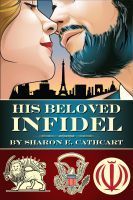 fiction and non-fiction with a powerful, truthful literary experience. Her primary focus is on creating fiction featuring atypical characters.
fiction and non-fiction with a powerful, truthful literary experience. Her primary focus is on creating fiction featuring atypical characters. More about SharonTo learn more about Sharon’s work, visit her website at http://sharonecathcart.weebly.com, or find her on Facebook at http://www.facebook.com/sharon.e.cathcart .
Published on July 10, 2013 07:00
July 3, 2013
An un-Expected Interview with Sarah England
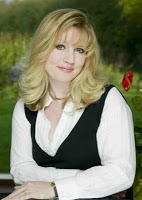 It's always a delight for me to feature a colleague from the author's community at Crooked Cat Publishing, and this week is no exception. I sat down with British author Sarah England to talk about her humor, mental health, and first full length comic novel, Expected. It's a comedy, but you'll find Sarah's a jewel of many facets. (Next time I'm going to have to ask her about the spooky stuff, too!)
It's always a delight for me to feature a colleague from the author's community at Crooked Cat Publishing, and this week is no exception. I sat down with British author Sarah England to talk about her humor, mental health, and first full length comic novel, Expected. It's a comedy, but you'll find Sarah's a jewel of many facets. (Next time I'm going to have to ask her about the spooky stuff, too!)
MSW: Sarah, you’ve written thrillers and chillers, explored the sinister side of life in your short stories. So how did you find yourself writing romantic comedy?
SE: Well Maggie, I whiz from one end of the literary genre straight to the other - something of a bi-polar mystery witch of the literary art form. I've written many many stories for magazines and am right at home in comedy - something to do with my upbringing probably, since my parents were not pushy in that they wanted me to do well in life - I was simply there for their general amusement. However, I maintain a morbid fascination in all thinks spooky, read the tarot and researched demonology for my next project. I also have a background in nursing and medical sales, specialising in mental health - so many of my ideas come from that. Finally I am not sure that Expected could be described as romantic - oh there is a fair old bit of sexual longing when Joel comes along - but most of it is wicked sparring between Sam Sweet and 'the wrong man' she's stuck with in the meantime... surgeon Simon.
MSW: Your new novel Expected concerns psych nurse Samantha Sweet, known as Sam, who is
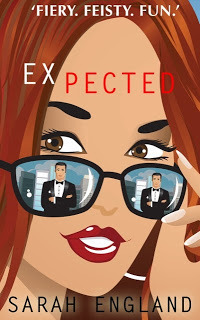 terrified of giving birth. A lot of people wouldn't consider that an obvious comedic premise. What took you there and how did you approach it?
terrified of giving birth. A lot of people wouldn't consider that an obvious comedic premise. What took you there and how did you approach it?SE: Oh yes that's true. It's just that it is expected (!) of Sam that she will marry this doctor (good catch) and have his children... only his attempts to persuade her by pairing her up with his sister as a birthing partner, and showing birth videos etc, only serve to terrify her more. The comedy comes from Sam trying to escape what is expected of her, have a crack at independence and try to make something of herself.
Everything goes wrong for her. Tragedy is so often juxtaposed with comedy in real life - it's a kind of Sod's law humour. I did want to get serious messages across however, and not wanting children is very taboo for a woman to admit - whether she changes her mind later, whether it is because she has not met the right man yet, or has tocophobia (fear of childbirth) it is not really tolerated or understood that well. So she has to find an enormous amount of courage to stand up and be counted. To admit who she is and what she wants. I think that serious messages like those Sam has - of feeling inadequate, grateful even to be treated shoddily by her fiance, coerced into behaving how her mother wants her to - can be portrayed in a more acceptable manner with the use of comedy. Hopefully. And Sam explains as the book goes along on this matter.
MSW: As the novel begins, Sam’s life is decidedly not going well. I know you trained as a nurse yourself. Coincidence?
SE: No. Sam took nursing because she wanted an escape route from the sink estate (boarded up windows, stray dogs, lots of bonfires...) and the benefits culture she was brought up in. She took psychiatric nursing since it involved clearing up less um....bodily secretions... but of course when she was in charge the patients took over. She now injects facial fillers and as the Queen of Jinx that isn't going too well either - product going lumpy. Yes I have been there too - stuck in the back room of a beauty parlour injecting a product into tissue-thin skin, but the unguent won't come out and Oh God.... it was awful... just horrendous... never again. SO much experience in this book - it really is tragic!
MSW: Writing short fiction can be radically different from planning, plotting, and finishing a novel. What encouraged you to make the shift and how did you find that transition? Will you do it again?
SE: I had around 150 short stories published (magazines, newspapers, anthologies, online) before starting Expected . Also a 3-part detective serial for Woman's Weekly (UK). I came to the point where I wanted to push myself to do more things. With short stories I basically jot down the ideas, type them up, and then know if they are going to work quite quickly. Expected - hmm, do you know I don't even know how it happened? It just had to come out. Yes there is a series of 'Sam Sweet' novels queuing up to be written, but it depends if readers like her or not - she is controversial and she has a lot of growing up to do.
MSW: What are you working on now?
SE: I'm dithering, Maggie. Either the sequel to Expected, or a supernatural thriller just buzzing around in my head... not sure which will be first as I am currently working hard to bring Expected to people's attention. But soon...
MSW: Casting Call! When it’s time to make the movie, who do you see in the principal roles in Expected?
SE: Oh well now we're dreaming.... the big dream - wow. Well I have always wanted Christina Hendricks to play Sam. In the beginning Sam has no self-belief and only sees herself as the fat ginger girl - like so many young girls these days she has no confidence in the way she looks - but then when she meets Joel - wowee - Madison, and he calls her Christina Hendricks - well, she then morphs into the kind of va-va voom girl he dreams of. I'd like to see bigger women play the major roles. For Joel - well I'd have to get a few good looking guys onto the casting couch I think.... Take my time choosing... hmm... he's got to be mature, silver-haired, cobalt eyes, tanned and broad shouldered, strong presence and wear a Stetson with style... And talk like Elvis - he's from Tennessee.
MSW: Finally, my favorite question: When you come to power, what’s the first thing you’ll do?
SE: Make chocolate free of charge. Oh, and issue a worldwide death penalty for animal cruelty and child abuse.

Become an Englofile!Click here for Sarah's Website
You can also find her on:

FacebookTwitter: @sarahengland16LinkedinHer Amazon authorpageGoodreadsSmashwords: Sample Sarah's shorter comedy with a FREE download of "Desperate Women". Use coupon: SP93M

About Sarah England
 Sarah originally trained as a nurse in Sheffield (UK) and then went on to work as a medical representative for nearly 20 years, specialising in mental health. She had always wanted to write fiction, but did not begin until around eight years ago, prompted by a house move and relocation to the South coast of England. Since then around 140 short stories have been published, mostly in national magazines and various anthologies; most recently a 3-part detective serial in Woman’s Weekly.
Sarah originally trained as a nurse in Sheffield (UK) and then went on to work as a medical representative for nearly 20 years, specialising in mental health. She had always wanted to write fiction, but did not begin until around eight years ago, prompted by a house move and relocation to the South coast of England. Since then around 140 short stories have been published, mostly in national magazines and various anthologies; most recently a 3-part detective serial in Woman’s Weekly. In May 2013 3am and Wide Awake was released by Alife Dog Fiction—a collection of 25 thrillers, many supernatural or medically based—two of her predominant themes.
Expected, a comedy from Crooked Cat Publishing (June 2013) is her first novel.
Sarah lives in Dorset with husband Don and spaniel Harry.
Published on July 03, 2013 00:00
June 26, 2013
Gail Z. Martin: Who put the Magic in the Middle Ages?
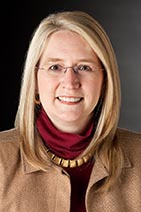
It’s true, I may not blog a lot myself—I always mean to, but it just doesn't seem to happen—but I do my best to find other fascinating writers, both new and established, for you to discover along with me. Gail Z. Martin is one of the wonder women at Broad Universe http://broaduniverse.org/, which is a professional organization dedicated to promoting, encouraging, honoring, and
celebrating women writers and editors in science fiction and fantasy. One of the nicer benefits of joining is meeting so many great women with so many interests in common. For example, the following speculation.

What is it about the Middle Ages that makes us think of magic?
Maybe it’s because those times seem so far removed from our own that it’s difficult to believe they were actually real, and not just an elaborate backstory created by Hollywood. Especially here in the United States, where our oldest buildings are only from the 1500s, anything older seems hard to imagine.
Of course, magic was considered to be real during the Middle Ages. Throughout Europe, witch hunts
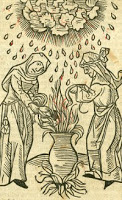 brought many innocents to a bad end. Educated people lived in fear of witches and curses, werewolves and vampires. Given the lack of scientific knowledge, illness, natural disasters and even crop failures were blamed on magic, which seemed the most likely explanation.
brought many innocents to a bad end. Educated people lived in fear of witches and curses, werewolves and vampires. Given the lack of scientific knowledge, illness, natural disasters and even crop failures were blamed on magic, which seemed the most likely explanation.I spend a lot of time researching background elements for my epic fantasy series, and it’s no surprise that I’m frequently drawing on medieval sources, legends, and real-life occurrences involving magic. I’m fascinated with a world where magic was believed to be real, a world whose inhabitants saw mystery—and horror—at every turn. What did it feel like to live in a world where so little was explainable? How vulnerable would you feel if there were no scientific explanations for the weather, disease, mental illness, blights and pestilence, if those and other hardships seemed to arise from curses and evil spells?
Medieval Europe was a place of dark forests and wild seas. The world was still not well explored, so the discovery of previously unknown peoples, places, animals and objects seemed magical in the literal sense of the word. The Old Religions acknowledged magic as real, venerating it in their legends and rituals. Catholicism disdained magic, but replaced it with an unending series of miracles and miracle-working saints whose legends often ventured into what can only be termed “magic.”
 All of which explains why medieval settings seem tailor-made for fantasy adventures. Limited technology and scientific knowledge, vast distances and slow communication, daunting natural disasters and uncharted waters all set the perfect stage for telling stories laced with magic. Looking back through the darkened mirror of time, even historically documented events seem to have the feel of forgotten magic about them. That world seems so different from our own that it barely feels real.
All of which explains why medieval settings seem tailor-made for fantasy adventures. Limited technology and scientific knowledge, vast distances and slow communication, daunting natural disasters and uncharted waters all set the perfect stage for telling stories laced with magic. Looking back through the darkened mirror of time, even historically documented events seem to have the feel of forgotten magic about them. That world seems so different from our own that it barely feels real.And yet, people really don’t change. Examine today’s urban myths, and you’ll find more than a hint of magical thinking as people try to explain big, complicated events with simple causes. Logic need not apply, and many urban myths and conspiracy theories won’t hold up for a moment to scientific evidence, but there is something soothing at a primal level about simple, organic explanations in our nano-tech world.
I guess that’s why I love writing epic fantasy with magic. I enjoy the idea of a world that isn’t completely explainable, filled with wonder and mystery, where magic can and does happen and things aren’t always as they seem. In our world full of satellite images, Google Glass, and cellular biology, sometimes it’s fun to imagine not knowing everything. I enjoy the mystery.

Gail’s Giveaways!
 My Hawthorn Moon Sneak Peek Event includes book giveaways, free excerpts and readings, all-new guest blog posts and author Q&A on 21 awesome partner sites around the globe. For a full list of where to go to get the goodies, visit www.AscendantKingdoms.com.
My Hawthorn Moon Sneak Peek Event includes book giveaways, free excerpts and readings, all-new guest blog posts and author Q&A on 21 awesome partner sites around the globe. For a full list of where to go to get the goodies, visit www.AscendantKingdoms.com.@GailZMartin Book Giveaway on Twitter—Every day from June 21 – June 28 I’ll be choosing someone at random from my Twitter followers to win a free signed book. Invite your friends to follow me—for every new 200 followers I gain between 6/21 – 6/28, I’ll give away an additional book, up to 20 books!
More about Gail Z. Martin
Gail Z. Martin is the author of Ice Forged in her new The Ascendant Kingdoms Saga (Orbit Books), plus The Chronicles of The Necromancer series (The Summoner, The Blood King, Dark Haven & Dark Lady’s Chosen) and The Fallen Kings Cycle (The Sworn and The Dread). She is also the author of two series on ebook short stories: The Jonmarc Vahanian Adventures and the Deadly Curiosities Series. Find her online at www.AscendantKingdoms.com.
Gail's Videos
See the mini-trailer:
http://www.youtube.com/watch?v=1BaaGqiXqiE
and http://www.youtube.com/watch?v=DSA_AtViDzY
and http://www.youtube.com/watch?v=teyvxnIEITg
Published on June 26, 2013 04:00



